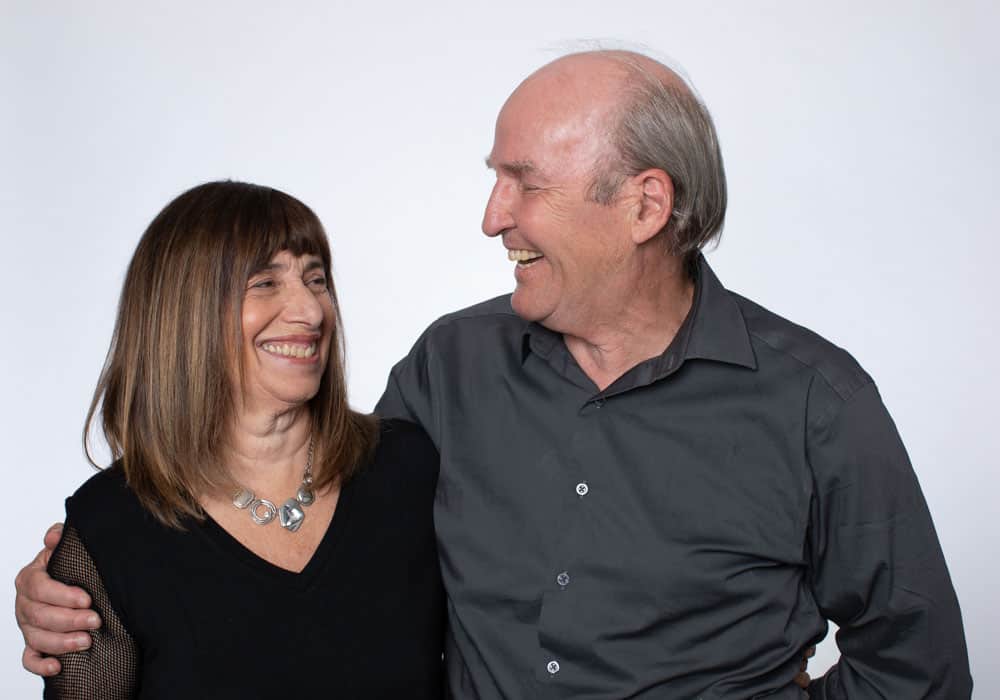The Developmental Model of Couples Therapy, pioneered by Ellyn Bader and Peter Pearson, offers a framework for understanding the natural stages and challenges couples face in their journey together. This model is built on the principle that healthy relationships are not conflict-free but are characterized by the ability to manage conflicts constructively.
According to Bader and Pearson, couples progress through distinct developmental stages, each with its own tasks and opportunities for growth. Bader and Pearson emphasize the importance of “process processing” – reflecting on conflicts, identifying underlying emotions and needs, and exploring ways to meet those needs without compromising one’s partner.
The Developmental Model describes these stages using developmental challenges, not pathology. These stages are:
- Bonding (Symbiosis)
- Differentiating
- Practicing
- Rapprochement
Let’s discuss each of them briefly.
Bonding (Symbiosis) Stage
In Ellyn Bader’s couples therapy approach, a couple bonds early and falls into romantic love. They focus on their similarities and don’t want to be reminded of their differences, although intellectually, they realize they have differences. Regardless, it doesn’t appear to matter in this bonding stage. They are “soul mates” who are “destined to be together.”
Sex is usually highly frequent, and the couple becomes inseparable, maybe threatening other friendships. Some call this the Limerence Phase. Whatever it is called, it is intoxicating, marvelous, and engulfing. Bonding is an important stage for babies, mothers, and couples. Intimate physical touch, like cuddling, sleeping intertwined, and sex, reconnects us to our earliest roots as humans.
Differentiating Stage
However, as time goes on, these differences become impossible to ignore. “Difference” becomes more pronounced at this stage. Differentiation is the normal stage, a ‘tug’ of personalities, and clear discussions are needed. It assumes that two realities exist, not just one.
Whether they fight about these differences or try to co-exist peacefully, one or both partners can’t help but notice they are no longer “inseparable.” In childhood, the infant realizes that the Mother is a separate creature with her own wants and needs. The Mother is no longer an extension of the child, magically knowing what the child wants and instantly providing it.
In normal couples’ development, each partner learns this same lesson: “We’re separate human beings with different wants and needs.” More importantly, in this stage, couples learn that expressing themselves clearly and openly isn’t “dangerous” to the love they share. They can be different but not be “bad” because of those differences. If they both reach this stage roughly the same time (which isn’t the norm), it is a time of frank discussions that help each clarify their values.
However, intimate sharing of those differences can also bond them closer. It is the standard tug of personalities wanting different things. When they maneuver this developmental challenge successfully, they learn a way of fighting without escalating or manipulating the other. And they don’t “give up” what they want and need, either, feeling “hopeless” that they’ll never meet their needs.
They learn to listen without taking their partner’s feelings as “accusations” and becoming “defensive.” They learn to speak about their own experience without projecting their hurts or feelings onto their spouse. They don’t blame or accuse. They talk about how the events impacted them personally.
Their sentences start with “I feel…” or “I think…” They are going through the critical phase of defining these thoughts and feelings in front of their intimate witness. The more they talk, the more they become clearer about what these issues really mean to them and why they are invested emotionally in them. With the help of an understanding listener, they learn more about themselves: their goals, values, hopes, and dreams. They learn more about themselves through sharing due to the differences that arise between them. This is the role of the “Initiator” in the Developmental Model.
Ideally, the listener (Bader called them the “Inquirer”) learns to become more open, curious, and less defensive. Even if their partner is angry at them, they learn to remain calm internally.
“He/She is telling me about their experience of me. They aren’t talking ABOUT ME.”
This can be difficult because it assumes that two realities exist, not just one. They become empathetic when their partner is hurting, curious when their partner is angry with them, and reassuring when their partner becomes fearful.
In the role of the “Inquirer,” they learn to ask the most challenging types of questions: truly open-ended questions that help the speaker go deeper while feeling they are in the presence of someone who truly wants to understand.
Practicing Stage
In Bader’s model of couples therapy, at some point, like the child no longer content to sit on their parent’s lap, the Practicing stage starts when one or both partners begin to focus on the world around them to a greater extent. Children are driven to explore the world around them. It is a normal developmental task.
Having learned that “difference” doesn’t damage their relationship, they begin exploring the world around them. If successful in Differentiation, they’ve learned how to manage differences, speak up clearly for themselves, and manage their anxiety.
Now, in Practicing, they test out what it means to them and how it impacts the relationship to have “selfish moments,” separate friends, private thoughts, distinct career ambitions, unique hobbies, or periods of emotional withdrawal. If both are at this stage simultaneously, it is a busy time of growth for both.
Each hardly notices the other’s exploration and independent activities; if they do, they are proud that they can function well without being overly “needy.” Both enjoy the ability to become more creative and curious about themselves and the world and to identify themselves as loving, worthwhile, powerful individuals.
However, a shift causes the partners to look back on the pleasures of being a team and feel bonded. Like returning home to the familiar after an extended absence, this “returning to” is both tender and more open. What was once “ordinary” and “nothing special” is greatly appreciated. Attachment and ordinary pleasures are noticed.
Rapprochement Stage
- There’s greater vulnerability and openness in this stage.
- More satisfaction with the relationship.
- A greater appreciation for your partner’s unique place in your life.
Like the child that happily explores the world, Rapprochement resembles the tired child after a long play date: happy to go home and see their family, toys, and the comfort of their bed.
It becomes easier to say: “Let’s negotiate on that. I want you to be happy, too.” Getting what you want is no longer seen as a win-lose proposition. Each wants to assist their partner in getting what’s important to them and reach their own life satisfaction. True teamwork emerges. Only “win-win” solutions are acceptable, even if no true 50/50 division exists. “Making you happy makes me happy” might have been heard in the Symbiotic phase, but now it is genuinely meant on a much deeper level. One spouse is personally enriched by the happiness of the other.
In this stage, the partners learn to give, even when inconvenient, because the partnership is no longer a “zero-sum game.” Loving enables them to develop greater maturity and a greater capacity to respond consistently and with greater care to their partner’s needs. They voluntarily choose to give up those things that they realize are distressing to their partner without resentment or feelings of deprivation. The power struggles of the practicing phase or the struggle over managing differences get easier.
Sex gets better at this stage, too.
In the follow-up post, we’ll explore practical strategies for processing fights at different developmental stages and tools for assessing and improving your conflict resolution skills as a couple.
By understanding the Developmental Model and its principles, you can gain valuable insights into the underlying dynamics of your conflicts and chart a path toward more constructive communication and deeper emotional intimacy with your partner.
Summary
The Developmental Model of Couples Therapy, developed by Ellyn Bader and Peter Pearson, provides a framework for understanding the natural stages and challenges couples face in their relationships. The model emphasizes that healthy relationships are not conflict-free but rather characterized by the ability to manage conflicts constructively. Couples progress through distinct developmental stages: Bonding (Symbiosis), Differentiating, Practicing, and Rapprochement. Each stage presents unique tasks and opportunities for growth, with couples learning to communicate effectively, manage differences, and support each other’s individual needs while maintaining a strong partnership. By understanding these stages and engaging in “process processing,” couples can gain valuable insights into their conflicts and work towards deeper emotional intimacy and personal growth.


